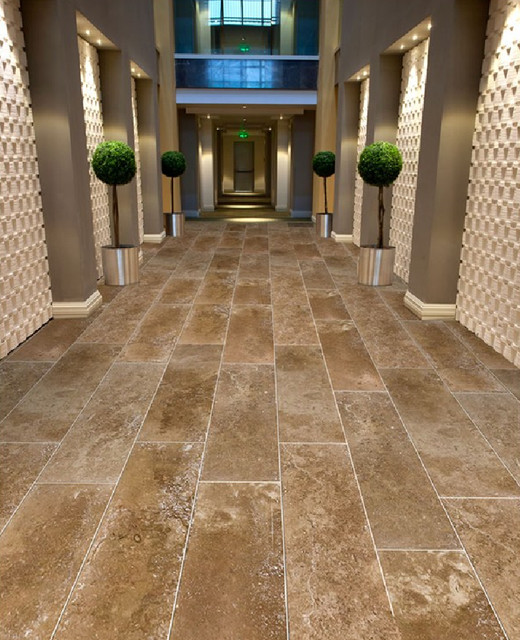Travertine has become a popular choice for kitchen and bath projects. There are tons of options to choose from and after finally choosing the right one, you will certainly care about this next step: sealing your Travertine tile to ensure that it looks as beautiful as it did when you first saw it!
Why Seal Travertine Tile
Travertine is a natural and porous stone. As such, it needs to be sealed to protect its natural beauty (not to mention your investment) so it doesn’t absorb liquids. Sealing means that you don’t lose what originally attracted you to the stone. A sealer acts like a barrier between the stone and potential stains.
When Should A Sealer Be Applied To Travertine Tile?
Sealing Travertine is fairly easy and should be done during installation and periodically thereafter – approximately every three to five years, depending on usage and traffic, as well as the products used to clean your surfaces after use. Harsh chemicals, for example, can prematurely wear away the sealer.
Difference Between Enhancing and Natural Sealers?
You have several sealer options available to choose from. The most common are Enhancing and Natural sealers.
– Enhancing sealers darken stone and give it a “wet” look.
– Natural sealers offer the same protection without changing the stone’s appearance.
How To Apply Sealer To Travertine
A sealer can be applied to Travertine using a sponge, brush, paint pad, cotton towel or sprayer. Any sealer that has not been absorbed by the stone in 5 minutes should be removed using an absorbent paper or micro-fiber towel. Allow at least thirty minutes of drying time between applications if two or more coats are applied. After the final coat, wait two to three hours. Test the sealer by putting water droplets on the stone; if you notice no water being absorbed, the Travertine has been successfully sealed! Although a sealed floor can be walked on two hours after applying the sealer, you should typically plan on twenty four hours to completely cure the surface. Definitely keep it dry for at least twelve hours.
Don’t Seal Stained Stone!
Before you seal, make sure your original surface has no stains. If you seal a stained stone, the stain remains forever. Similarly, your sub floor or installation surface needs to be clean and free of debris prior to installation. If items such as screws, nails, washers, even loose coins get stuck in the thin-set, they may rust and stain the stone from the back.
Although we recommend that Travertine be sealed given how porous it is, it makes sense to seal any natural stone surface – particularly Marble, Limestone, Onyx, Quartz, and Granite in addition to Travertine. Yes, even Granite is porous, although considerably less to than Travertine. Without being sealed, it will start to look dirty after use.
For all natural stone surface, you will want to quickly clean up any liquid spills and especially those from red wine, Kool-Aid, soda or paint…
While sealing Travertine is one of the easier materials to seal, it’s not a job everyone wants to do. If you are interested in having the professionals seal your Travertine for you, consider giving the professionals at ASJ a call. Simply click one of our “Get A Quote” buttons or give us a call at 717-632-2241.


